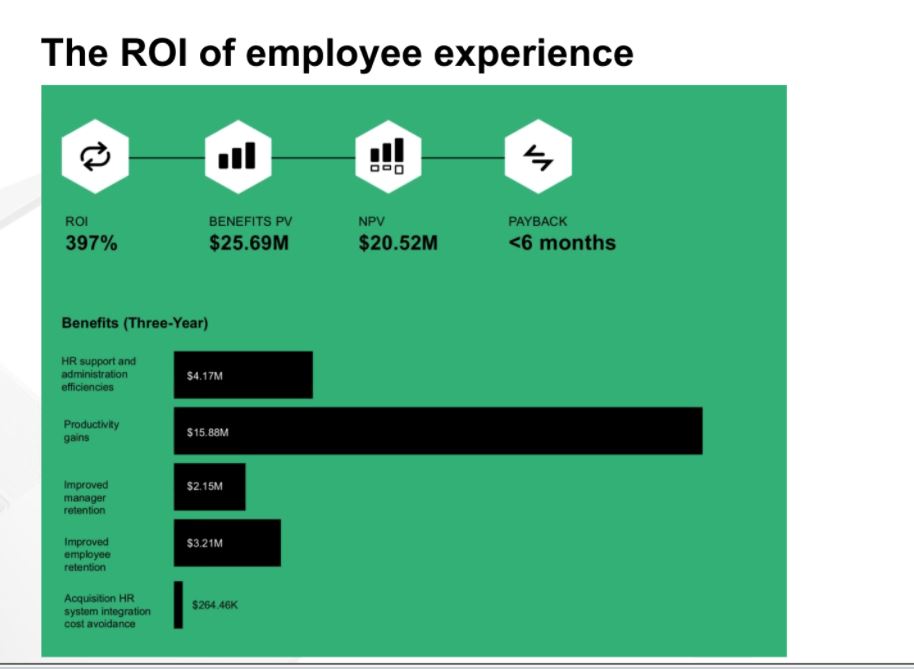Applaud and PwC on the current and future of digital employee experience
There is a clear business case for focusing on employee experience. What must HR do to get the most of employee experience tech?
Why You Should Care
Employee experience has grown in importance during the pandemic.
It has become a focus at C suite level, particularly in the context of the ongoing 'Great Resignation'.
But how can HR teams get the most of the tools and design the best employee experience strategy?
COVID-19 has caused an acceleration in the adoption and use of technology in the workplace.
As part of this, more and more organizations are focusing on employee experience and ensuring that the technology employees rely on is efficient, easy to use and brings productivity gains.

To achieve this, many employers are embracing focused employee experience tech solutions – like Applaud, Microsoft Viva and Qualtrics – as a tech layer between core HR systems and productivity tools like Slack, Zoom and Microsoft Teams.
PricewaterhouseCoopers (PwC) partner Elmo Hildebrand noted, in a recent webinar with HR tech company Applaud, that having this additional layer of employee experience tech is important to success. It helps tie together all the disparate technologies that companies rely on to perform well, but can be frustrating for employees to use and keep track of.
In addition, having a layer of employee experience tech can help managers and HR drive a consistent employee experience in the future of hybrid work, according to Hildebrand.
The business case for employee experience

It is important to note that productivity gains are not the only benefit of employee experience tech and strategies for companies. In fact, there are other clear returns on investment according to research by Applaud and Forrester.
While often employee experience can be a “soft consideration”, it is important to keep an eye on the business case, noted Applaud co-founder and chief technology officer Duncan Casemore during the webinar with PwC.
In fact, PwC and Applaud have done some research and found that over three years the return on investment into employee experience is 397% and payback comes within six months. These gains particularly come if employers invest in tech that focuses on the preferences of employees, rather than HR’s needs, stated Casemore.

Credit: Applaud/PwC webinar.
These savings come from freeing up HR’s time to do value-added tasks, according to Casemore, HR tech integrations, as well as improved manager and employee retention.
The latter, which saved $5.36m according to the research over three years, is becoming more important to top-level C suite conversations due to the huge expense of recruiting and, therefore, savings of having employee experience technology and strategies.

In the context of the ‘Great Resignation’, the business value of employee experience has climbed the CEO agenda, meaning conversations around investment are easier conversations for HR to have, according to Hildebrand.
This is clear from Applaud and Forrester’s report where 37% of global HR leaders said they would be investing in workforce experience platforms in the next year, while 29% said they would upgrade their HR tech in the next 12 months.
Ultimately, investing in a top-notch employee experience tech solution can really help companies compete in the highly competitive war for talent.
Chris de Waal, PwC’s director of people and organization, noted that this employee experience has to start before the person is even an employee. It must start with the recruitment process, which is the first touchpoint between individuals and organizations.
HR leaders need to be excellent here with employee satisfaction and experience otherwise their company will lose out on top talent to those who are getting it right, according to de Waal.
Employee experience feeds into customer experience
Applaud’s Casemore was clear that HR has a lot of learn about employee experience from design thinking that goes into companies’ implementing a great customer experience.
It is important that HR designs experiences around the needs of employees, particularly as different demographics – and particularly generations – will have different preferences and needs.
Therefore, de Waal called for employee experience strategies to be personalized and individualized to everyone’s unique needs.
Hildebrand agrees that employee experience and customer experience go hand in hand. This also ties into employees wanting customer grade products in the workplace, which de Wall also mentioned in the webinar.
Of course, having a great employee experience is ultimately good for customer experience because “happy employees engages with customers”, which, in turn, is good for business, noted de Waal.
Looking to the future, Casemore and de Waal agree that future-proofed employee experience tech and strategies will require companies to be agile to respond to future changes.
Hildebrand adds that companies must be very aware of the evolving needs and demands of younger generations of employees, particularly with regard to their expectations from the tech itself.
Sign up to the UNLEASH Newsletter
Get the Editor’s picks of the week delivered straight to your inbox!

Chief Reporter
Allie is an award-winning business journalist and can be reached at alexandra@unleash.ai.
